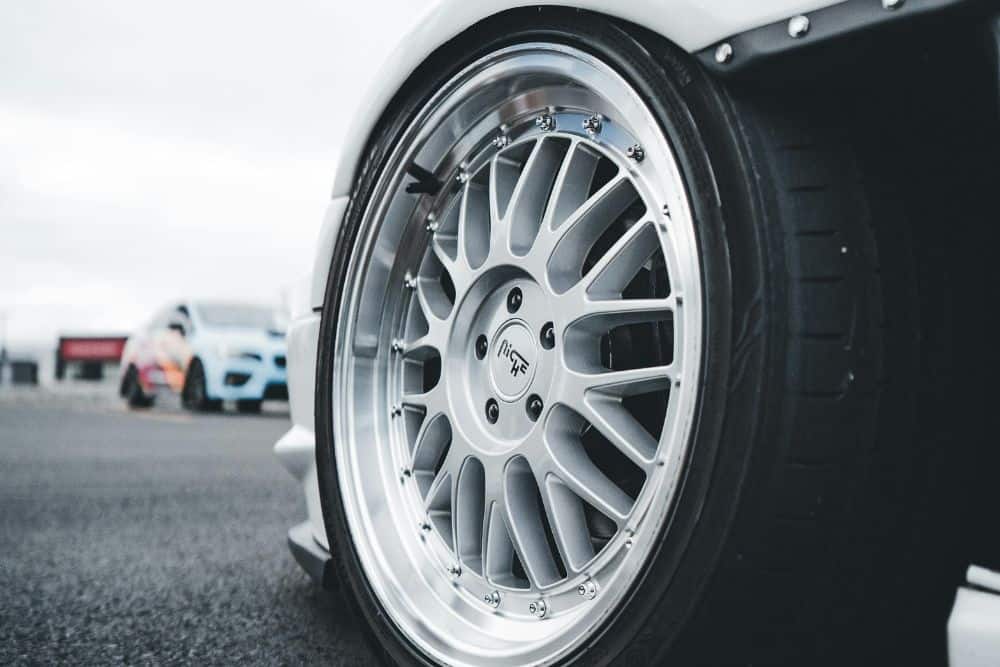
The BMW M3 and M4 models equipped with dual clutch transmission (DCT) systems are renowned for their lightning-fast gear changes and engaging driving experience. Built by Getrag to handle significantly more torque than these cars produce, the DCT is actually quite reliable, with many owners reporting trouble-free operation well past 160,000 kilometres.
However, like any high-performance component, these transmissions do have some characteristic behaviours and maintenance needs that owners should understand. Proper care and awareness of potential issues can help you avoid problems and keep your BMW running at its peak for years to come.
Low-Speed Jerkiness and Shift Quality
One of the most commonly reported characteristics of the BMW M3 and M4 DCT is jerky or lurching behaviour at low speeds, particularly when manoeuvring in traffic or approaching junctions. This isn’t necessarily a failure, but rather how the transmission was originally programmed. When slowing down on a trailing throttle and then reapplying power, many owners experience a noticeable “thump” as the drive re-engages, or a delay before the car responds. Some drivers also report the transmission holding gears too long or shifting down abruptly, creating an uncomfortable sensation that feels at odds with the car’s otherwise refined nature.
This behaviour stems from how BMW calibrated the DCT software to balance smoothness with performance. The transmission control unit makes predictions about which gear you’ll need next, but during slow-speed manoeuvring or uncertain throttle inputs, these predictions can feel clumsy. The issue is most noticeable in automatic mode during city driving, where the constant stop-and-go conditions confuse the transmission’s adaptive logic. Many owners find that using manual mode with the paddles eliminates most of these concerns, as you maintain direct control over gear selection.
Fortunately, this issue can be significantly improved through software updates. BMW released several firmware updates during the production run that refined the shift logic and reduced the jerky behaviour. Additionally, aftermarket solutions like the GTS DCT software remap have proven very effective at transforming the low-speed driveability. If your car still has older software, having it updated to the latest version from BMW can make a noticeable difference. For cars used primarily for spirited driving rather than commuting, many owners report that driving in Sport mode actually improves the transmission’s behaviour, as it doesn’t try as hard to deliver ultra-smooth shifts.
Clutch Pack Wear from Aggressive Use
The dual clutch system in BMW M3 and M4 models uses two separate clutches to manage odd and even gears, and while these are robust components, they do experience wear over time. This is particularly true for vehicles that see frequent track use, repeated launch control events, or drivers who hold the car on hills using clutch engagement rather than the brake. When clutch packs begin to wear excessively, you’ll notice symptoms such as slipping during hard acceleration, a burning smell, difficulty engaging gears smoothly, or shuddering when pulling away from a standstill. The clutch material gradually degrades with each engagement, and this process accelerates dramatically under high-performance use.
That said, clutch longevity is impressive when the car is driven normally. Many owners report original clutches lasting well over 160,000 kilometres, and some in the United States have exceeded 320,000 kilometres on the original clutch packs. The key factor is how the car is used. Auckland’s hilly terrain can contribute to premature wear if drivers develop poor habits, but the transmission is more than capable of handling normal driving conditions for a very long time. Track days and repeated launch control events are the primary culprits for accelerated clutch wear, not everyday driving.
To maximise clutch life, avoid excessive use of launch control unless you’re at the track. While it’s tempting to use this feature regularly, each launch puts enormous stress on the clutch packs. On hills, always use your foot brake to hold the vehicle rather than relying on clutch engagement. Allow your transmission to warm up properly before driving aggressively, as cold transmission fluid doesn’t provide adequate lubrication and cooling. Regular transmission servicing with high-quality fluid helps maintain proper clutch operation and extends component lifespan significantly.
Transmission Fluid Service Requirements
Many BMW owners are surprised to learn that DCT transmission fluid requires regular changing, despite BMW’s earlier claims about “lifetime” fluid. The reality is that transmission fluid in high-performance applications like the M3 and M4 degrades over time, especially when the car is driven enthusiastically or used on track. The fluid breaks down due to heat, shearing forces, and contamination from clutch material and internal wear particles. As the fluid degrades, it loses its ability to lubricate properly, maintain correct viscosity, and transfer hydraulic pressure efficiently throughout the transmission system.
Fresh transmission fluid is essential for maintaining the health of the mechatronic unit, clutches, and all internal components. Degraded fluid appears darker than fresh fluid and may contain visible particles or develop a burnt smell. This contamination can clog fine filters and restrict flow through the hydraulic control systems. While some owners have gone many miles without fluid changes, this is not recommended for long-term reliability. The small investment in regular fluid service is far more cost-effective than dealing with transmission repairs down the line.
Most specialists recommend transmission fluid changes every 40,000 to 60,000 kilometres, or every three to four years, whichever comes first. However, if you regularly participate in track days or drive your car hard, consider shortening this interval to every 30,000 kilometres. Always use manufacturer-approved DCT fluid or high-quality alternatives specifically formulated for dual clutch transmissions. The correct fluid specification is critical, as standard automatic transmission fluid will not provide adequate protection for these specialised gearboxes. Regular transmission servicing is the single most important maintenance item for ensuring long-term DCT reliability.
Mechatronic Unit Issues
The mechatronic unit combines hydraulic and electronic components to control gear selection and clutch engagement in your DCT transmission. This sophisticated piece of engineering contains solenoids, sensors, and hydraulic valves that work together to deliver rapid gear changes. While not a universal problem, mechatronic unit failures do occur and represent one of the more serious potential issues with the DCT. When this unit begins to fail, you might experience erratic shifting, harsh engagement, unexpected gear changes, transmission warning lights, or the transmission refusing to engage certain gears altogether.
Mechatronic failures often stem from contamination due to degraded transmission fluid that leaves deposits on sensitive internal components. The unit operates in a harsh environment, constantly bathed in hot transmission fluid and subjected to rapid pressure changes during gear shifts. Over time, solenoids and valves can wear or seize, leading to improper operation. Early warning signs include jerky or delayed shifts, strange noises during gear changes, or a “clunking” sensation when shifting between drive and reverse. If you notice any of these symptoms, having the transmission diagnosed promptly can prevent additional damage to other components.
The good news is that mechatronic issues can often be prevented through proper maintenance. Keeping the transmission fluid clean and fresh is the primary defence against mechatronic problems. When fluid degrades, it loses its ability to operate the hydraulic systems effectively and can deposit contaminants on sensitive components. Following a strict service schedule with complete fluid changes provides the best protection. If mechatronic repairs are needed, costs can range from $2,000 to $4,000 depending on the extent of damage, making prevention through regular maintenance a wise investment.
Transmission Oil Leaks
One of the more common but less serious issues with the BMW DCT is oil leaks from various gaskets and seals. These leaks typically develop over time and are more of an annoyance than a catastrophic failure. The most common leak points include the oil pan gasket, the mechatronic unit side seal, and various O-rings throughout the transmission housing. The oil pan is made of plastic and can warp over time, making it prone to leaking. Some owners report leaks developing at relatively low mileage, though many others never experience any leaking issues.
While these leaks usually start as minor weeping that leaves spots on your driveway, they should be addressed before they become more serious. Low transmission fluid levels can lead to overheating, poor lubrication, and potential damage to internal components. If you notice transmission fluid under your car or detect the distinctive smell of transmission fluid, have the transmission inspected to identify and repair the source of the leak. Regular visual inspections during routine servicing can catch leaks early before they cause bigger problems.
Repairing these leaks typically involves replacing the faulty gasket or seal, which is relatively straightforward maintenance. Some owners opt for aftermarket billet aluminium oil pans that don’t warp like the plastic originals, providing a permanent solution to oil pan leaks. While not every DCT will develop leaks, being aware of this potential issue and addressing any leaks promptly will help maintain proper fluid levels and protect your transmission.
Transmission Temperature Management
DCT transmissions generate substantial heat during aggressive driving, and proper cooling is essential for maintaining safe operating temperatures. Under normal driving conditions, the transmission cooling system handles heat perfectly well. However, during extended track sessions or spirited driving in warm weather, transmission temperatures can climb significantly. When the transmission overheats, the control unit will limit power delivery or shift into a protective mode to prevent damage. Auckland’s summer temperatures, combined with spirited driving, can push transmission temperatures higher than ideal if the cooling system isn’t functioning properly.
Signs of transmission overheating include warning lights on the dashboard, the transmission entering limp mode, or delayed and harsh shifting after extended hard driving. The transmission cooler can become blocked with road debris or suffer from corrosion over time, reducing its effectiveness. In coastal areas around Auckland, salt air can accelerate deterioration of the cooler. Regular inspection of the transmission cooler during routine servicing can identify blockages or damage before they lead to overheating issues.
For street-driven cars used normally, overheating is rarely a concern. However, if you frequently track your car or drive it hard, ensuring your cooling system is in good condition becomes more important. Maintain proper fluid levels, change the fluid regularly for optimal heat dissipation properties, and ensure the transmission cooler is clean and free from blockages. If you’re a regular track-day enthusiast, consider upgrading to a higher-performance transmission fluid with better thermal properties. After hard driving, allowing the car to idle for a minute or two before shutting down lets heat dissipate through the cooling system.
Software and Adaptation Concerns
The DCT transmission relies heavily on software to control its operation, and the transmission control unit continuously adapts shift points and clutch engagement based on your driving style and component wear. Sometimes, these adaptive parameters can become confused or corrupted, leading to poor shift quality even when all mechanical components are functioning properly. This can manifest as harsh shifts, delayed engagement, or shifts occurring at inappropriate times. Software issues can also arise after battery disconnections or electrical problems, leaving the transmission operating with incorrect parameters.
The adaptation process is designed to compensate for normal wear by adjusting clutch bite points and shift pressures as components age. However, if the transmission experiences sudden changes, such as after repairs or significant component replacement, the existing adaptations may no longer be appropriate. Some owners report significant improvements in shift quality after having their transmission adaptations reset and allowing the system to re-learn, particularly if the previous adaptations were compensating for issues that have since been fixed.
Software-related transmission concerns require diagnostic equipment to identify and resolve properly. A quality scan tool can read transmission fault codes, review adaptation values, and perform resets when necessary. After major transmission service or repairs, clearing the adaptations allows the system to learn the characteristics of the refreshed components. BMW also released several software updates during the production run that addressed known issues and improved transmission behaviour, so ensuring your car has the latest updates can resolve many driveability concerns.
Get Expert DCT Servicing for Your BMW M3 or M4
The BMW M3 and M4 DCT transmission is a robust and reliable piece of engineering that can provide hundreds of thousands of kilometres of trouble-free driving with proper care. Understanding its characteristics and following recommended maintenance schedules will help you avoid the few issues that can occur and keep your performance car operating at its best.
As an independent BMW service centre in Auckland and transmission experts, we at Dodson provide expert DCT transmission servicing for BMW M3 and M4 models. Our team understands these high-performance transmissions intimately and uses only the highest quality fluids and components. We offer comprehensive transmission services, from routine fluid changes to repairs and complete rebuilds, all performed in our Wairau workshop. Whether you need regular maintenance or are experiencing transmission concerns, contact our team today by calling 09 441 3635 or emailing service@dodsonmotorsport.com to book your service.

 Looking for Dual Clutch transmission components outside of New Zealand?
Looking for Dual Clutch transmission components outside of New Zealand? 








